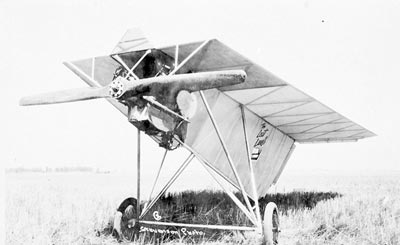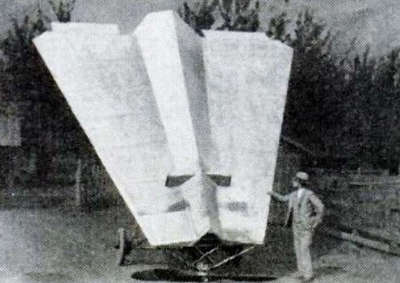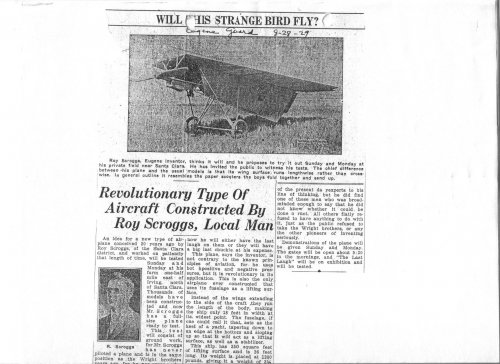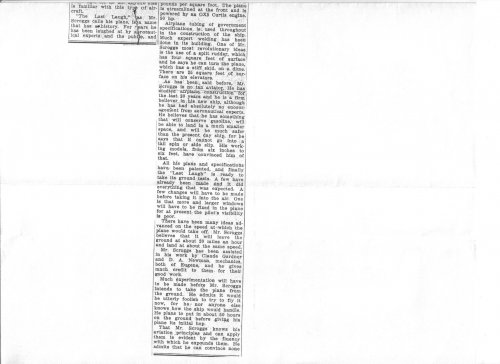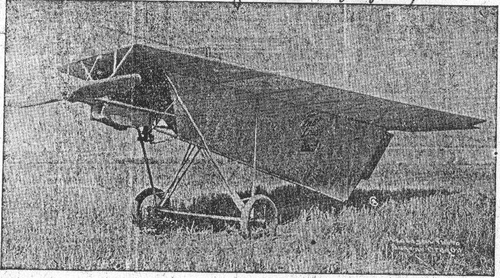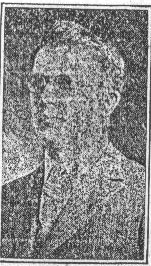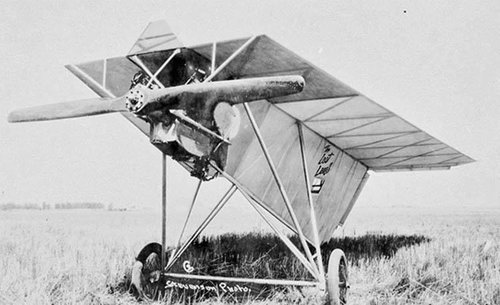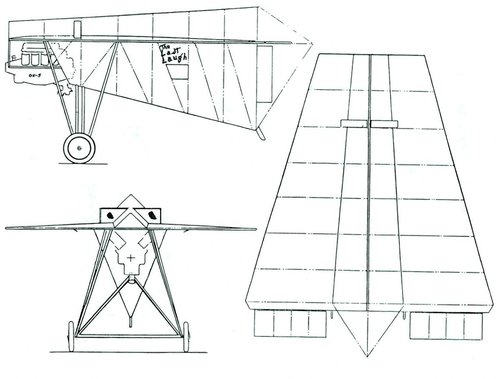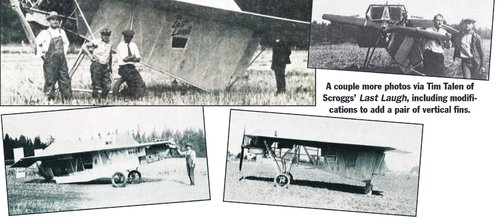- Joined
- 25 June 2014
- Messages
- 1,564
- Reaction score
- 1,499
The Last Laugh was the name of a strange aeroplane built in America by Roy Scroggs in 1929.
In 1917 he had patented a dart-shaped lifting-body concept: US patent 1,250,033. It had a kite-section fuselage tapering in sync with the very low-aspect-ratio delta wing. He treated it as a lifting body design, in which the wings were as much adjuncts to the body as lifting surfaces in themselves and he made much of the deep keel which his cross-section gave it. It looked for all the world as if he had simply been playing with paper darts.
Disparaged by experts and ridiculed by his neighbours, he eventually built a modified version with the nose cut off to provide mounting for a 90 hp Curtiss OX-10 engine and two-bladed tractor propeller (the original concept had been a rear-engined pusher). He believed it would have high economy, unstallability and STOL performance. Registered as NC10648, there are skimpy claims that it flew to about 10 ft, and the next year he applied for an updated patent for it: US Patent 1,848,578.
Information is scarce, though I found enough to write a Wikipedia article on it. The best source I have found is a newspaper article: "Revolutionary Type of Aircraft Constructed by Roy Scroggs, Local Man", Eugene Guard, 28 August 1929, p.12. But this is a pay-for download so I have not been able to get a clean copy of the text, there is just an OCR dump of the whole page available. Does anybody have access to get a readable copy, or know of any other good sources?


In 1917 he had patented a dart-shaped lifting-body concept: US patent 1,250,033. It had a kite-section fuselage tapering in sync with the very low-aspect-ratio delta wing. He treated it as a lifting body design, in which the wings were as much adjuncts to the body as lifting surfaces in themselves and he made much of the deep keel which his cross-section gave it. It looked for all the world as if he had simply been playing with paper darts.
Disparaged by experts and ridiculed by his neighbours, he eventually built a modified version with the nose cut off to provide mounting for a 90 hp Curtiss OX-10 engine and two-bladed tractor propeller (the original concept had been a rear-engined pusher). He believed it would have high economy, unstallability and STOL performance. Registered as NC10648, there are skimpy claims that it flew to about 10 ft, and the next year he applied for an updated patent for it: US Patent 1,848,578.
Information is scarce, though I found enough to write a Wikipedia article on it. The best source I have found is a newspaper article: "Revolutionary Type of Aircraft Constructed by Roy Scroggs, Local Man", Eugene Guard, 28 August 1929, p.12. But this is a pay-for download so I have not been able to get a clean copy of the text, there is just an OCR dump of the whole page available. Does anybody have access to get a readable copy, or know of any other good sources?
